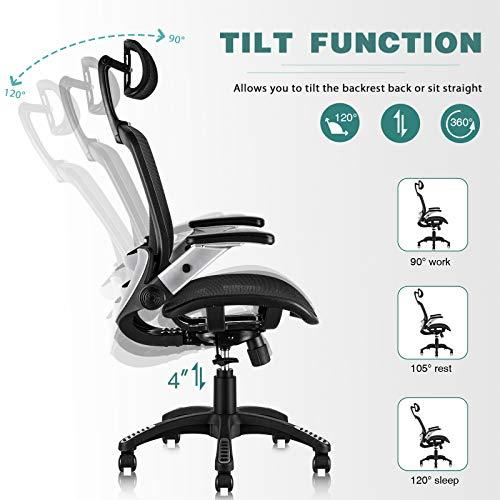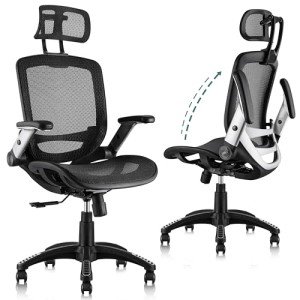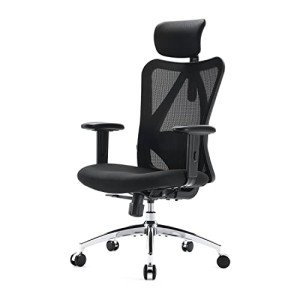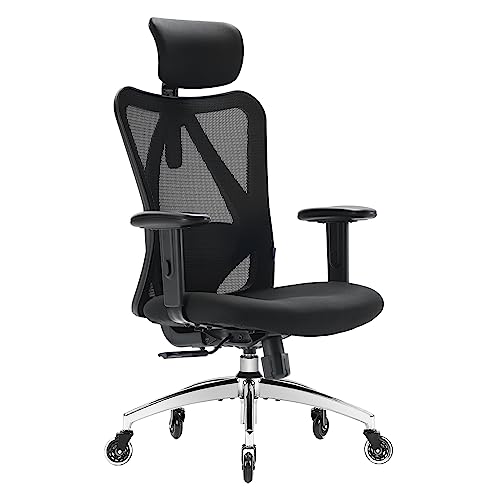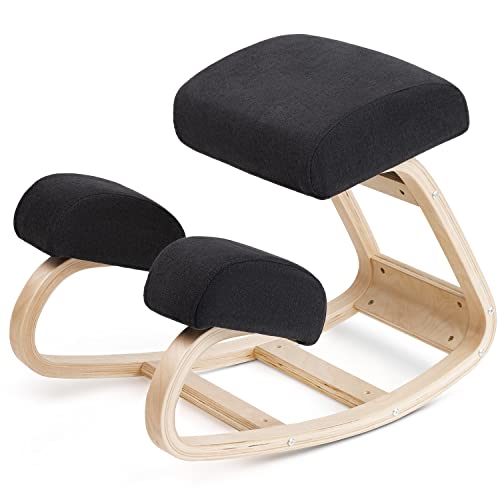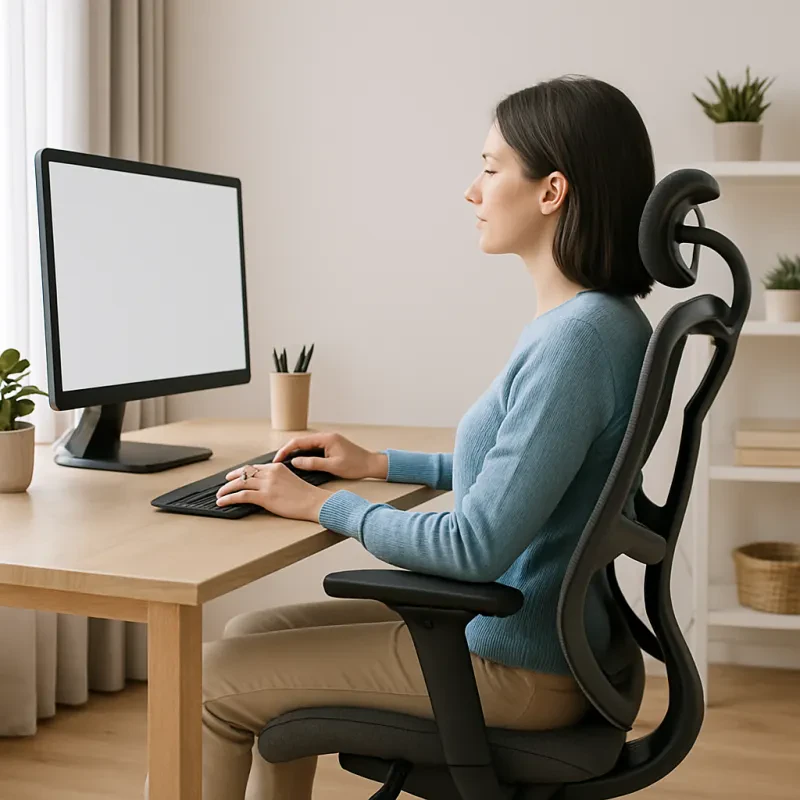In today’s world, many of us spend more time sitting than ever before. Whether it’s for work, gaming, studying, or simply relaxing at home, hours upon hours are spent in a seated position. But not all chairs are created equal—and the wrong one can silently wreak havoc on your health, your posture, and even your ability to concentrate.
That’s where ergonomic chairs come in. These specially designed seats are more than just a luxury or a tech-office trend—they’re a practical, science-backed solution to some of the most common discomforts of modern life. From reducing chronic back pain to improving posture and mental focus, an ergonomic chair can be a small change that creates a massive ripple effect in how you feel and function every day.
Let’s explore how and why the right chair makes such a big difference—and what to look for when choosing one.
Back Pain and the Chair You Never Questioned
Back pain has become one of the most widespread health complaints in the modern world, especially among office workers and remote professionals. It’s so common, in fact, that many people start to accept it as a normal part of life—something that comes with the territory of being an adult with responsibilities.
But here’s the truth: most back pain isn’t inevitable. It’s often the result of poor posture and prolonged sitting in chairs that simply don’t support the body in the right way.
Standard office chairs or dining room chairs may look fine on the surface, but they usually lack the features needed to maintain healthy spinal alignment. Without adequate lumbar support, your lower back bears the brunt of your body’s weight, forcing your muscles to compensate. Over time, this can lead to muscular fatigue, compressed discs, and a steady buildup of soreness that starts mild—but doesn’t stay that way.
The slouching, twisting, and fidgeting many people experience while seated isn’t a lack of discipline—it’s your body’s desperate attempt to relieve pressure and find balance in a chair that isn’t doing its job.
The Science Behind Ergonomic Seating
So what makes a chair “ergonomic”? At its core, ergonomics is the science of designing environments and tools to fit the needs and limitations of the human body. An ergonomic chair is built around this principle—it adapts to your body rather than forcing your body to adapt to it.
These chairs are engineered to support the natural curve of your spine, distribute your weight more evenly, and reduce pressure on the parts of your body most vulnerable to strain—especially your lower back, hips, and neck.
A good ergonomic chair doesn’t just support you when you sit upright. It also encourages dynamic movement, subtle shifts in posture, and periodic changes in position—all of which help improve circulation and reduce the risk of stiffness or pain over long periods.
Posture: More Than Just Sitting Up Straight
Posture is one of those things we all know we should care about, but few of us truly understand. Good posture is not about rigidly sitting with your back bolt upright or constantly reminding yourself to “sit up straight.” In fact, trying to hold an unnatural position all day can be just as exhausting as slouching.
What you really need is a chair that naturally positions your body in a neutral, balanced alignment. This means your feet rest flat on the floor, your knees are bent at roughly 90 degrees, and your hips are level or slightly above your knees. Your lower back should be gently supported, your shoulders relaxed, and your elbows at a comfortable height in relation to your desk or keyboard.
When your body is in this optimal position, your muscles don’t have to overwork to keep you stable. You’re not constantly compensating for a sinking seat or an awkward angle. Instead, your body can relax into a state of ease that allows you to focus on the task at hand.
An ergonomic chair makes this type of posture automatic. It eliminates the guesswork by giving you the right angles, support points, and adjustability to mold the chair to your body—not the other way around.
The Mental Benefits of Physical Comfort
When people think of ergonomic furniture, they often focus on physical health—back pain, joint strain, fatigue. But what’s often overlooked is how dramatically your comfort level can impact your ability to think, work, and concentrate.
Have you ever tried to focus on a report, a creative project, or an online meeting while your legs were going numb or your back was throbbing? It’s almost impossible. The brain is constantly pulled toward whatever discomfort you're feeling, draining your cognitive bandwidth and reducing your productivity in subtle, ongoing ways.
Studies have shown that even minor physical discomfort can lead to increased stress, irritability, and loss of focus. On the flip side, when your body feels supported, your mind becomes freer to engage, solve problems, and stay in the zone longer. You’re not being distracted by the need to adjust, stretch, or mentally count down the hours until you can get up.
This is one of the most underrated benefits of an ergonomic chair—it gives you the gift of sustained focus, which in today’s fast-paced digital world, is more valuable than ever.
What to Look for in an Ergonomic Chair
With so many options on the market, finding the right ergonomic chair might seem daunting. But it really comes down to a few essential features—each of which plays a specific role in supporting your comfort and spinal health.
First and foremost, look for a chair with adjustable lumbar support. This feature ensures that the natural inward curve of your lower back is supported without forcing your spine into an unnatural shape. A good lumbar support should be adjustable in both height and depth so it can fit the unique curvature of your spine.
Next, check for seat height adjustment. Your feet should always rest flat on the floor, with your thighs parallel to the ground. If a chair is too high or too low, it throws off your posture from the start.
Seat depth is another often overlooked factor. A seat that’s too deep can press into the back of your knees and restrict circulation, while one that’s too shallow leaves your thighs unsupported. The best ergonomic chairs let you slide the seat forward or backward to suit your leg length.
Adjustable armrests are key to relieving tension in your shoulders and neck. Ideally, they should allow your arms to rest comfortably without lifting or hunching your shoulders.
And don’t forget about recline and tilt functionality. The ability to lean back slightly and rock with natural motion throughout the day helps reduce spinal pressure and encourages healthy movement.
Finally, consider the material and breathability of the chair. Mesh-backed chairs provide airflow and keep you cool, while memory foam seats offer soft, pressure-relieving comfort for longer sitting sessions.
Real Users, Real Results
One of the most telling ways to understand the value of an ergonomic chair is to hear from people who’ve made the switch. Time and time again, users report that they didn’t even realize how uncomfortable their old chair was—until they upgraded.
Many describe a noticeable decrease in lower back pain within days of switching. Others say they no longer feel drained after a full workday or that their productivity has improved without any conscious effort—simply because their mind isn’t constantly interrupted by bodily discomfort.
For remote workers especially, an ergonomic chair often becomes the centerpiece of a healthy home office. In fact, for many, it’s not just a piece of furniture—it’s a daily wellness tool.
Not Just for the Office: Ergonomics for Everyone
While most people associate ergonomic chairs with office jobs, their benefits extend far beyond the 9-to-5 crowd. Students studying long hours at their desks, artists working on long creative sessions, gamers clocking hours in front of a screen, and even retirees who spend more time reading or relaxing—all can benefit from a chair that supports their body correctly.
The beauty of ergonomics is that it doesn’t care what you’re doing. It’s about how you’re doing it—and how your body feels while you’re at it.
A Long-Term Investment in Your Comfort and Health
It’s easy to view an ergonomic chair as an optional splurge. But in reality, it’s an investment in your health, your focus, and your day-to-day comfort. Considering how many hours we spend seated, choosing a chair that actively supports your body is one of the most powerful choices you can make.
Instead of pushing through another day of soreness and distraction, imagine what it would feel like to sit down and actually feel supported—your spine at ease, your muscles relaxed, your mind fully present.
That’s what a good ergonomic chair can do. It doesn’t just help you sit. It helps you sit well—so you can live and work better.
Ready to Feel the Difference?
If you’re ready to upgrade your home office or daily routine, we’ve put together a curated selection of the best ergonomic chairs available today. These top-rated picks are selected for comfort, adjustability, and long-term value—so you can feel the difference right away.
👉 Explore our top ergonomic chair recommendations now »
